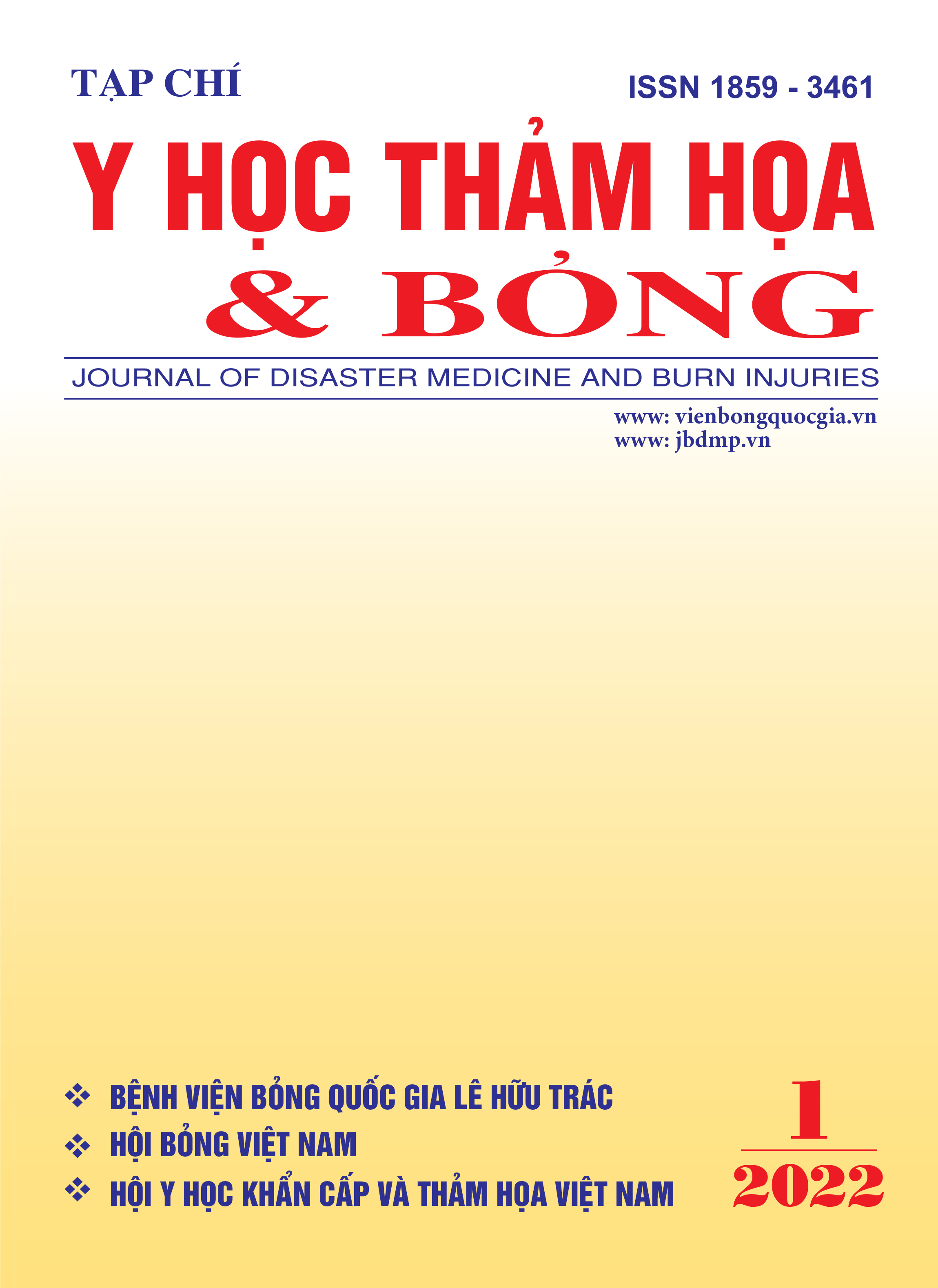Successful application of VAC on the exposed tendon and bone lesions in children's fingers due to low voltage electrical injuries
Main Article Content
Abstract
Introduction: The fingers are functionally and cosmetically important. Deep burn on the hand frequently exposes joints, bones and tendons. The exposed bone and tendon wounds need to be covered early to avoid progressive necrosis. Flap procedures are always the standard for managing complex soft tissue defects with exposed bones or tendons. In some areas, these procedures are not technically possible. Vacuum-Assisted closure has been effectively applied in the treatment of exposed tendons and bone lesions that protect exposed tendons and bones avoiding secondary damage and preparing wounds for lesser reconstructive options. However, with finger bone tendon lesions, it is not easy to place negative pressure suction due to the anatomical characteristics of the finger area, especially children's fingers with small size.
Therefore, this technique has not been widely used on deep-burn hands. In this article, we introduce one of the successful cases when applying this therapy.
Case presentation: His name is Pham Viet A., the 3-year-old male case was admitted to the pediatric burn department in the National Burns Hospital on August 28th, 2020 with a diagnosis of 20cm2 fifth-degree burn on 4 fingers of his right hand, except the thumb caused by low voltage electricity. He had undergone an operation to move necrosis, then Vacuum-Assisted Closure therapy (VAC therapy) was performed. The wound was closed and covered subsequently with split-thickness skin grafts- medium. The take graft was complete.
Conclusion: Negative pressure suction therapy can be applied effectively on the exposed tendon and bone lesions in children's fingers.
Article Details
Keywords
Deep hand burn, children, VAC therapy
References
2. Amouzou K.S. Treatment of an acute deep hand burn in a low-income country with no available microsurgery: a case report. 2016; 29(3): 228-230
3. Eyvaz K, Kement M, et al. Clinical evaluation of negative-pressure wound therapy in the management of electrical burns. 2018;24(5): 456-461
4. Ren Y, Chang P, Sheridan RL. Negative wound pressure therapy is safe and useful in pediatric burn patients. 2017; 7(2): 12-16
5. Sahin I, Eski M, Isik.S. The role of negative pressure wound therapy in the treatment of fourth-degree burns. Trends and new horizons. 2012; 25(2): 92-97
6. Rehim SA, Chung KC. Local Flaps of The Hand. 2014; 30(2): 137-151
7. Baharestani M, Amjad I, et al. V.A.C. Therapy in the management of pediatric wounds: Clinical review and experience. 2009; 6 (1): 1-26
8. Pedrazzi NE, Naiken S, Scala GL. Negative Pressure Wound Therapy in Pediatric Burn Patients. 2021; 10 (5): 270-280
9. Sorkin M, Cholok D, Levi B. Scar Management of the Burned Hand. 2017; 33(2) :305-315
10. Moore ML, Dewey WS, Richard RL. Rehabilitation of the burned hand. 2009; 25 (4): 529-541


